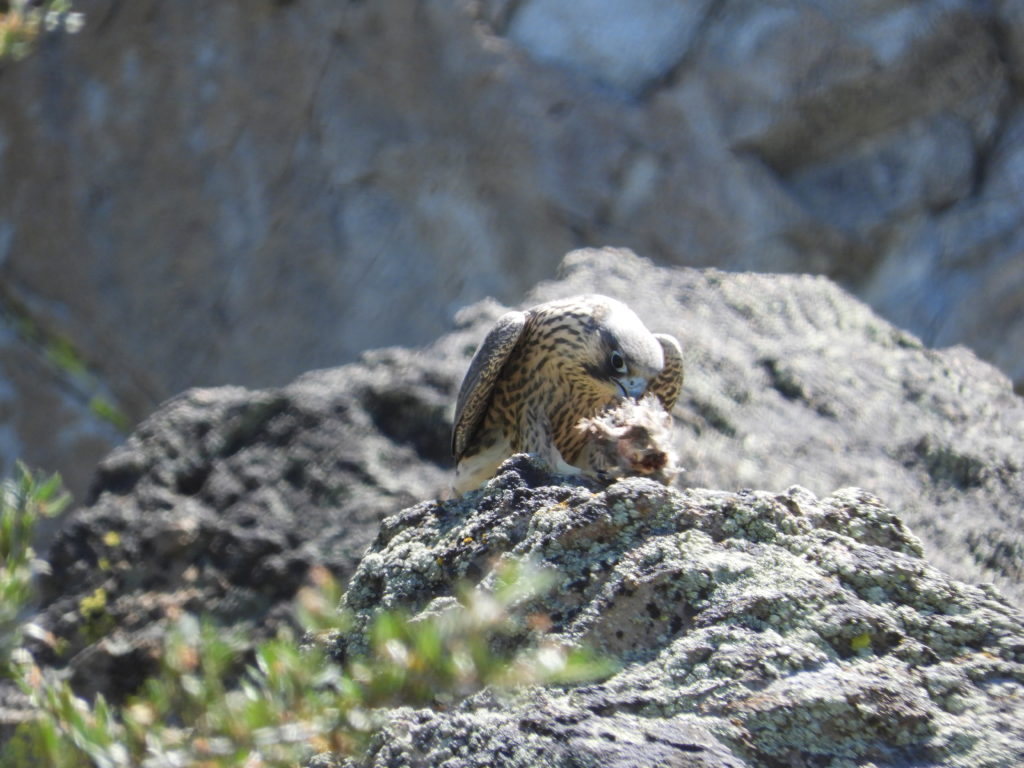Peregrine Falcons

Partners: USDA Forest Service Lake Tahoe Basin Management Unit, Tahoe Regional Planning Agency (TRPA), Nevada Department of Wildlife, California Tahoe conservancy, Tahoe Institute for Natural Science (TINS), and Sierra Ecotone Solutions
Funds Granted: $1,350
When a nest of peregrine falcons was threatened by nearby recreationists, a group of partners sprang into action to help protect the endangered raptors while still allowing access to popular hiking and climbing routes near the birds’ nesting sites. For the second year in a row, young peregrine falcons successfully left their nest at Castle Rock.
The USDA Forest Service Lake Tahoe Basin Management Unit, Tahoe Regional Planning Agency (TRPA), Nevada Department of Wildlife, California Tahoe Conservancy, Tahoe Institute for Natural Science (TINS), and Sierra Ecotone Solutions have monitored peregrine falcons as a special interest species dating back to 2009. Over the years of monitoring, falcon populations increased and expanded to new areas of the Basin like Castle Rock. Located in the southeast region of Lake Tahoe near Kingsbury Grade, the granite outcrop is an ideal nesting spot for the special bird. However, with excellent views of the lake, its popularity among climbers and hikers presented a new challenge for the raptors.
In 2019 they conducted an experiment with staff who were monitoring the nests. They sent volunteers up the climbing and hiking routes nearest the nests while observing the falcons’ behavior. They discovered that hikers caused more distress than the climbers when they traveled above the birds’ nests.
To educate hikers about the impacts their actions have on the young birds, signage was placed along the many trails at the site. The Tahoe Rim Trail Association (TRTA) helped place signs requesting hikers not to summit Castle Rock until the birds have fledged. In addition, the Climbing Coalition’s influence among the climbing community helped encourage climbers to select other routes during the nesting season for the sake of the birds.
This spring and summer, as COVID-19 shelter-in-place orders drove people to spend more time outdoors, TINS noticed an immediate impact on the falcons when hikers returned to where they were nesting. The group was alerted and the partners sprang into action. The TRPA printed signs and installed them on the trail, and the nonprofit Tahoe Fund jumped in to help pay for the continuation of the monitoring by TINS. Normally, each partner contributes several monitoring visits per season to this unique site, but with COVID most of the partners were not able to get into the field during the critical spring months. With the support of the Tahoe Fund, TINS was able to keep the monitoring schedule on track and remove the signs as soon as the young fledged.
Photo courtesy of Mark Enders, NDOW.